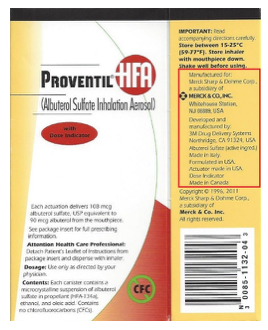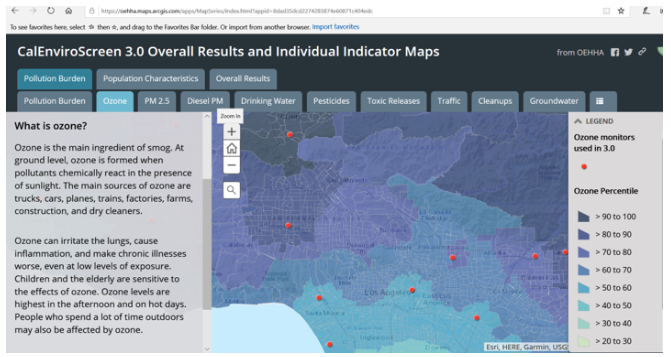CommentsPUBLIC HEALTH-Los Angeles needs to be self-sufficient by stockpiling everything that is necessary for any disaster.
Whether we are anticipating the next earthquake, the next wildfire, the next flooding event, we also must be prepared for public health emergencies as well. We as a City should be happy that our City and County are working well with each other during the Coronavirus pandemic, and that we also have a Governor who worked with our local leaders to create rules related to social distancing, and the need for everyone to wear masks in public.
Survival in the time of crisis: Albuterol – Brand names Proventil and Ventolin
 The one thing that I have not heard much discussion about is Albuterol – a Proventil inhaler.
The one thing that I have not heard much discussion about is Albuterol – a Proventil inhaler.
“USES: Albuterol (also known as salbutamol) is used to prevent and treat wheezing and shortness of breath caused by breathing problems (e.g., asthma, chronic obstructive pulmonary disease). It is also used to prevent asthma brought on by exercise. Albuterol belongs to a class of drugs known as bronchodilators. It works in the airways by opening breathing passages and relaxing muscles. Controlling symptoms of breathing problems can decrease time lost from work or school.”
Why is this so important now?
“We’re having a heat wave” . . . And along with that heat wave came a Public Health Alert from the Los Angeles County Department of Public Health on April 25th, 2020:
“Air Quality is Unhealthy for Sensitive Individuals in Parts of Los Angeles County”
“LOS ANGELES – According to the South Coast Air Quality Management District (AQMD) forecast, air quality will be unhealthy for sensitive individuals today, Saturday, April 25 in the following areas:
-
West San Fernando Valley
-
East San Fernando Valley
-
West San Gabriel Valley
-
East San Gabriel Valley
-
Pomona/Walnut Valley
-
South San Gabriel Valley
-
Santa Clarita Valley
-
San Gabriel Mountains
Los Angeles County Health Officer, Muntu Davis, MD, MPH, advises people living or working in these areas with heart disease, asthma or other respiratory diseases to minimize outdoor activities.”
The South Coastal Air Quality Management District (SCAQMD) sent out a notification that the East and West San Fernando Valley had exceeded the Ozone thresholds. At 2:00 pm on the 25th, Ozone was at 108.

This is a map of the forecast for the air quality in the Los Angeles region for Sunday, April 26, 2020. Large parts of the Los Angeles basin fall into the Unhealthy for Sensitive Group category.
Why is this air quality data so important now?
This kind of map is an example of air quality that we can expect as it becomes warmer in the summer months. In researching air temperatures for April in Los Angeles, I went to the Pierce College Weather Station website. This report is from 2019.
“STATION STATISTICS: Effective dates for statistics in this report are based the following observational period: 01 July 1949 to 30 April 2019, inclusive. The station’s period of record thus covers 70 Aprils.
Temperature:
Extreme maximum for any April: 105.0 F 40.6 C on 6th & 7th, 1989
Extreme minimum for any April: 30.0 F -1.1 C on the 9th, 1953
Highest April mean daily maximum: 84.6 F 29.2 C in 1987
Lowest April mean daily maximum: 64.5 F 18.1 C in 1967
Lowest April mean daily minimum: 38.1 F 3.4 C in 1967
Highest April mean daily minimum: 50.9 F 10.5 C in 2019
Highest April mean monthly: 66.4 F 19.1 C in 1992
Lowest April mean monthly: 51.3 F 10.7 C in 1967”
My point – Greater than 90-degree temperatures are not the normal average for the Woodland Hills and West San Fernando Valley area.
For reference, you can see the Live Data at Pierce College here.
We know that in Los Angeles, the air temperature will exceed 100 degrees, and we know that those temperatures are no longer restricted to the summer months. With those air temperatures, we regularly see exceedances in “safe” levels of Ozone.

This image is from the American Lung Associations “Most Polluted Cities” website.
Los Angeles is listed Number 1 for Ozone and #4 for “Year-Round Particle Pollution.”
In my article, “What Everyone Should Know Before Making a Planning Decision,” I showed the data on the California Office of Environmental Health Hazard Assessment’s (OEHHA’s) tool: CalEnviroScreen 3.0 – Pollution Burden map.

This screen shot is from CalEnviroScreen 3.0 and it shows the estimated Ozone levels based on the Ozone monitors as they are mapped by the red dots on the screen.
Again, as I referenced in my article on Planning, this image defines:
“What is ozone?
Ozone is the main ingredient of smog. At ground level, ozone is formed when pollutants chemically react in the presence of sunlight. The main sources of ozone are trucks, cars, planes, trains, factories, farms, construction, and dry cleaners.
Ozone can irritate the lungs, cause inflammation, and make chronic illnesses worse, even at low levels of exposure. Children and the elderly are sensitive to the effects of ozone. Ozone levels are highest in the afternoon and on hot days. People who spend a lot of time outdoors may also be affected by ozone.
More information can be found in the Ozone chapter in the CalEnviroScreen 3.0 report.”
How does Los Angeles County need to be prepared?
-
Los Angeles physicians and health agency representatives should anticipate that they will need to stockpile Albuterol and similar products for those people who regularly require short term inhalers to be able to breathe.
-
The Los Angeles County Department of Public Health should be looking for supplies for Albuterol and similar drugs in anticipation of future COVID – 19 cases.
-
The State of California Department of Health should also be stockpiling Albuterol and similar drugs for COVID – 19 and other respiratory illnesses.
Why is this important now?
This is a message from the Asthma and Allergy Foundation of America:
“Albuterol Inhaler Shortage Due to COVID-19 Could Impact People with Asthma.”
“A message to asthma sufferers about a shortage of albuterol metered dose inhalers
ARLINGTON HEIGHTS, IL (March 20, 2020) - Certain areas of the country are experiencing shortages of albuterol inhalers. The shortage will probably spread throughout the U.S., although it is not a production problem. The shortage is occurring because of the increased use of albuterol inhalers in hospitals for COVID-19 and suspected COVID-19 patients to help with respiratory issues. There is a concern that nebulizers used on patients with COVID-19 in the hospital could spread the virus in the air. But the possible risk is to hospitalized patients with COVID-19 – not to patients using their nebulizer at home as directed.
What should you do if you or your child are having trouble getting an albuterol inhaler? The recommendations below from the American College of Allergy, Asthma and Immunology (ACAAI) offer practical ideas for coping:
-
First, don’t panic. Check your inhaler to make sure it still has medicine.
-
If necessary, you can likely use your expired albuterol inhaler as it is probably still at least partially effective.
-
If you can’t get a refill on your metered dose inhaler, contact your allergist or health care provider as there are other options available which they can prescribe.
-
It is important that you not overuse your albuterol inhaler, as one canister should last for months.”
We must ask our elected officials, why we can’t have Albuterol made in the United States – or better yet, in Los Angeles?

Cropped image of the box of Proventil as shown above; I placed the red rectangle on the box image for emphasis.
-
Note: The Proventil HFA is Manufactured for: Merck Sharp & Dohme Corp., a subsidiary of MERCK & CO., INC – Whitehouse Station NJ 08889, USA
-
Developed and manufactured by 3M Drug Delivery Systems, Northridge, CA 91324, USA
-
Albuterol Sulfate (active ingred.) Made in Italy.
-
Formulated in USA.
-
Actuator made in USA.
-
Dose Indicator – Made in Canada
My conclusion: Why can’t this whole Proventil HFA inhaler be manufactured in and stockpiled in Los Angeles – ideally in Northridge where we have as shown on the maps above some of the worst air quality in Los Angeles?
(Chris Rowe, a former health care employee who has worked at Northridge Hospital, Tarzana Medical Center, and West Hills Hospital has a B.S. in Health Education. She is a 42-year resident of West Hills. She has written for the Los Angeles Daily News, RonKayeLA.org; OurLA.org; and CityWatch. She has a blog on the USC/ Annenberg Center for Health Journalism website and can be reached at [email protected]) Edited for CityWatch by Linda Abrams.
